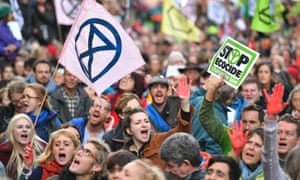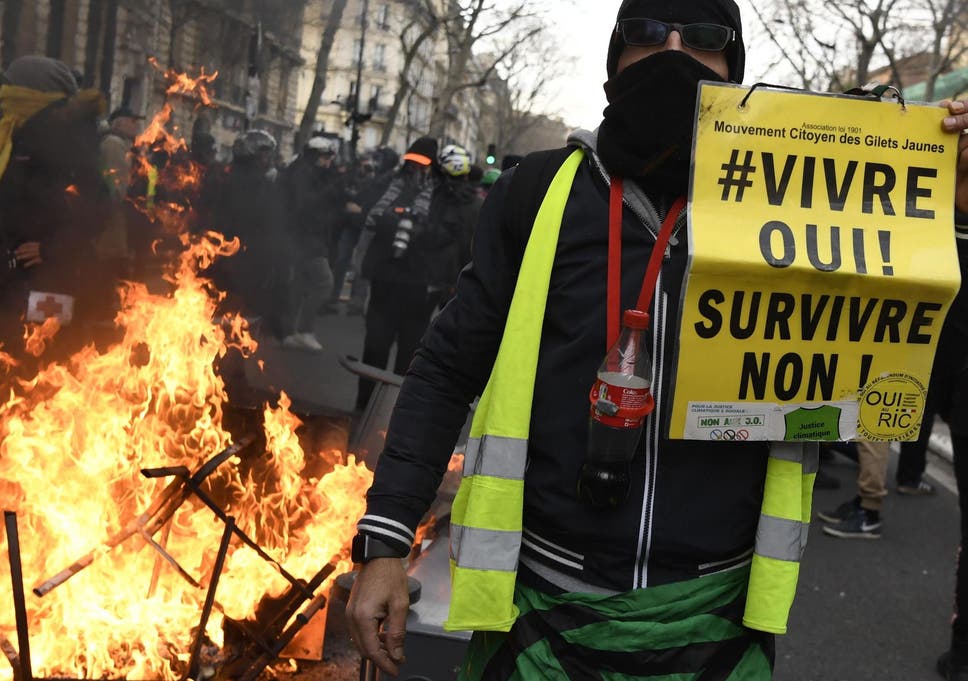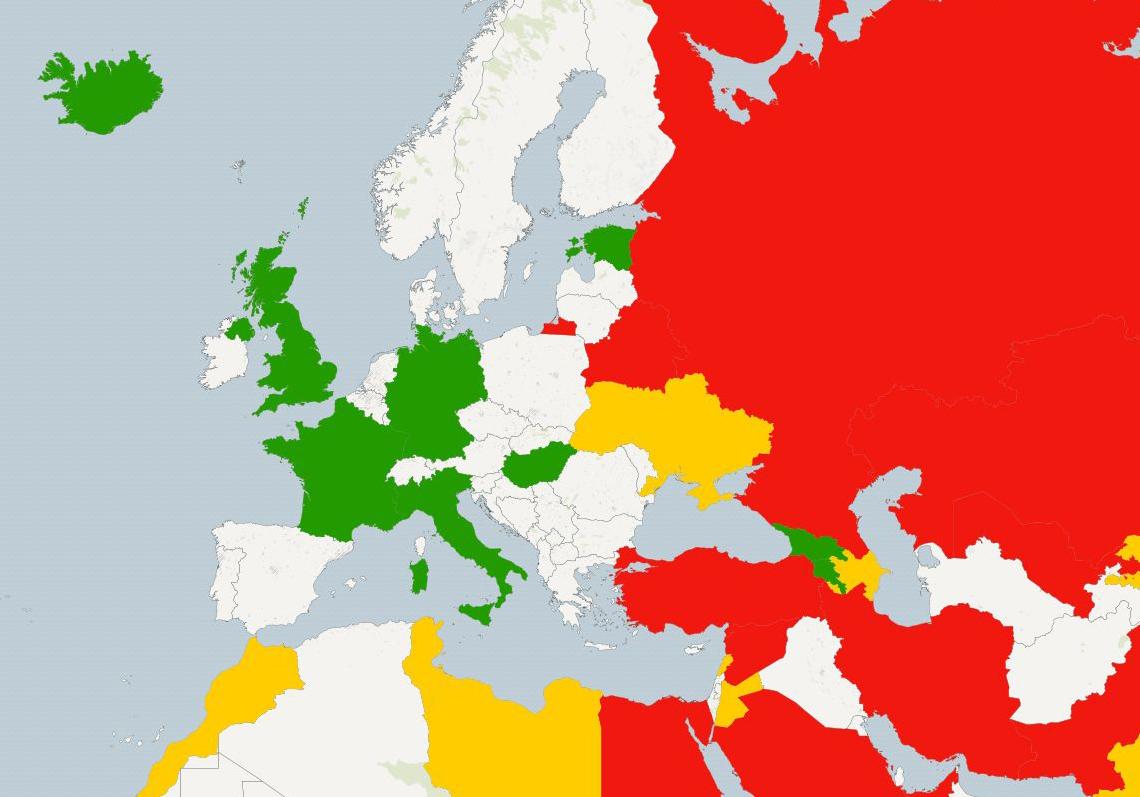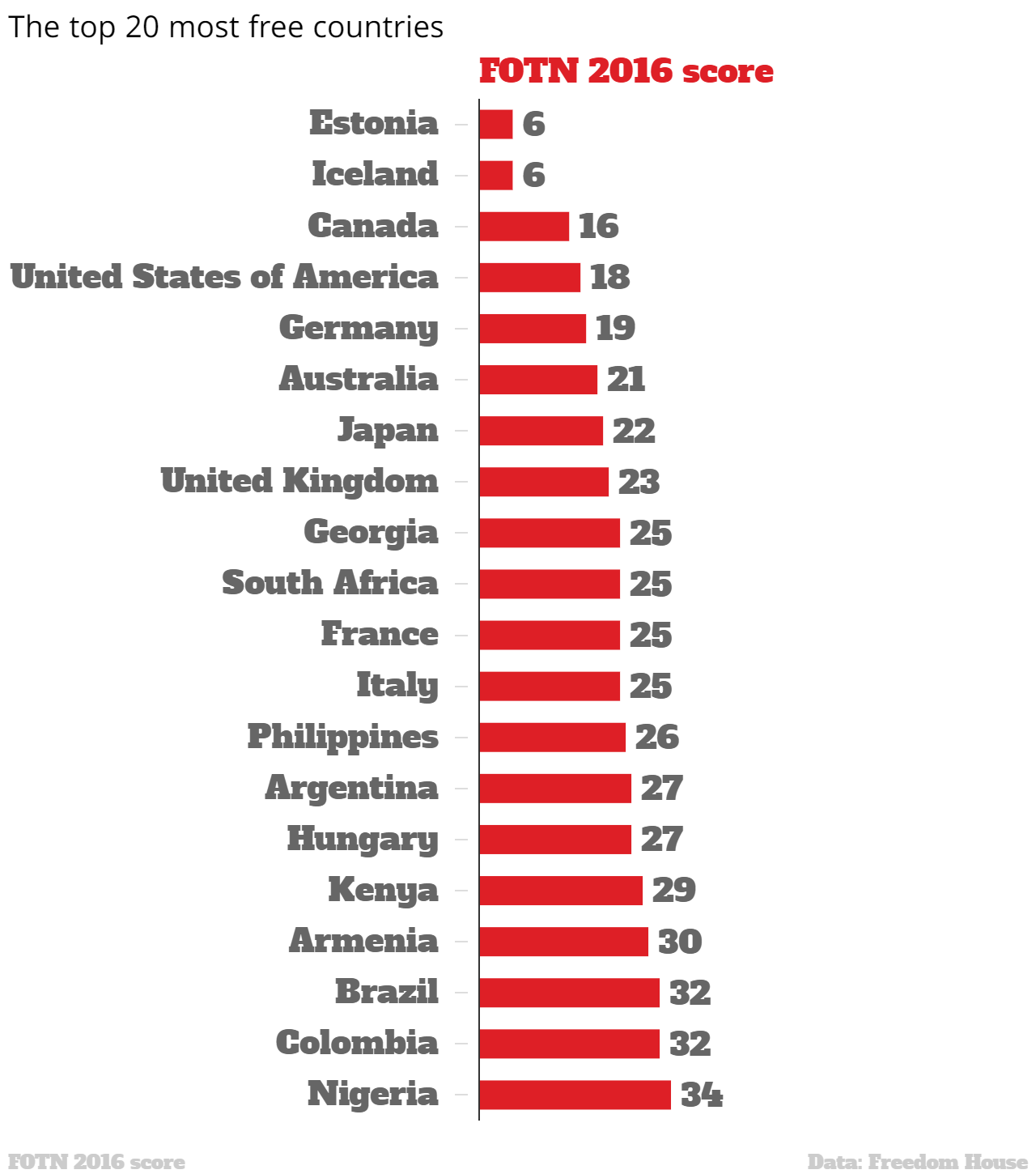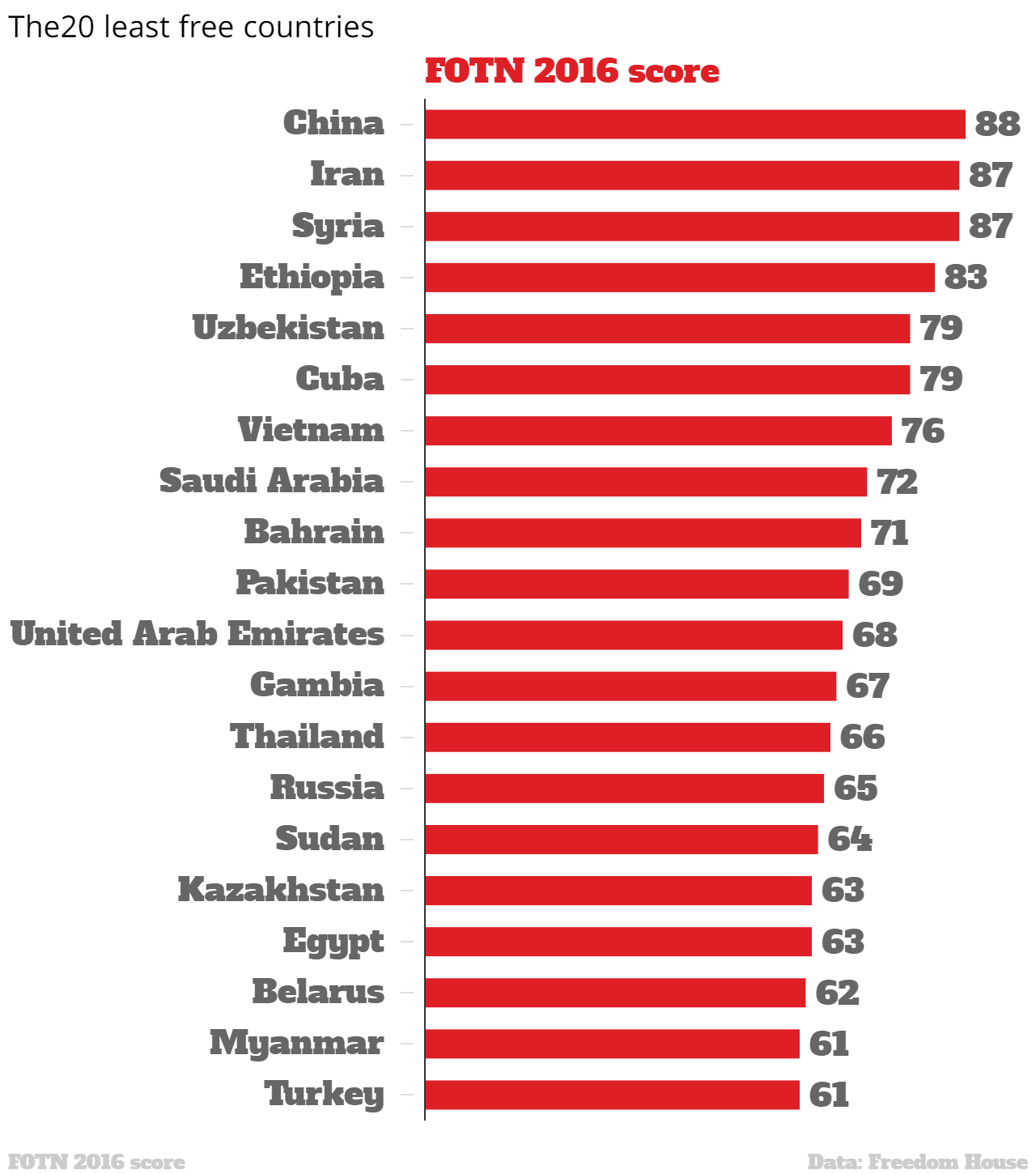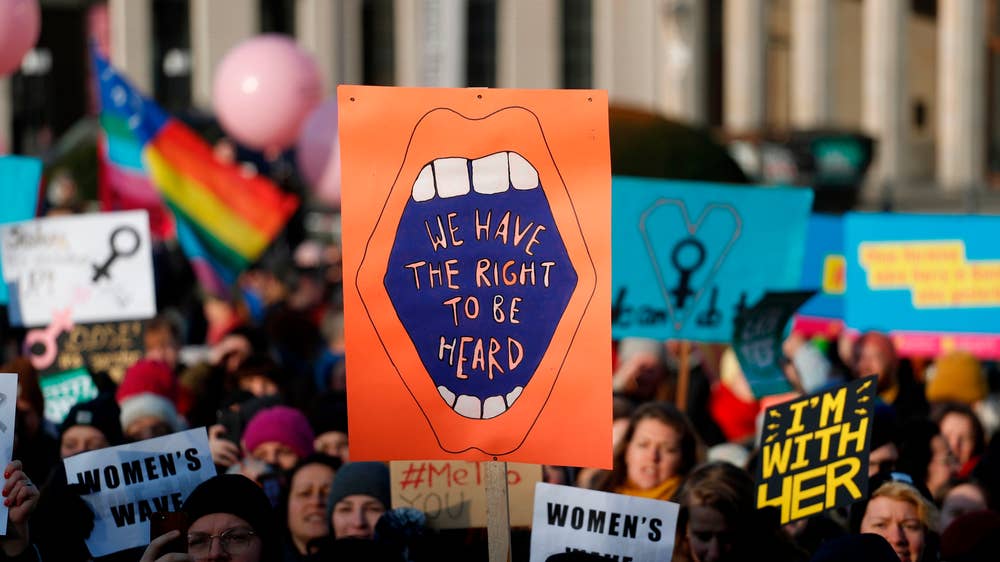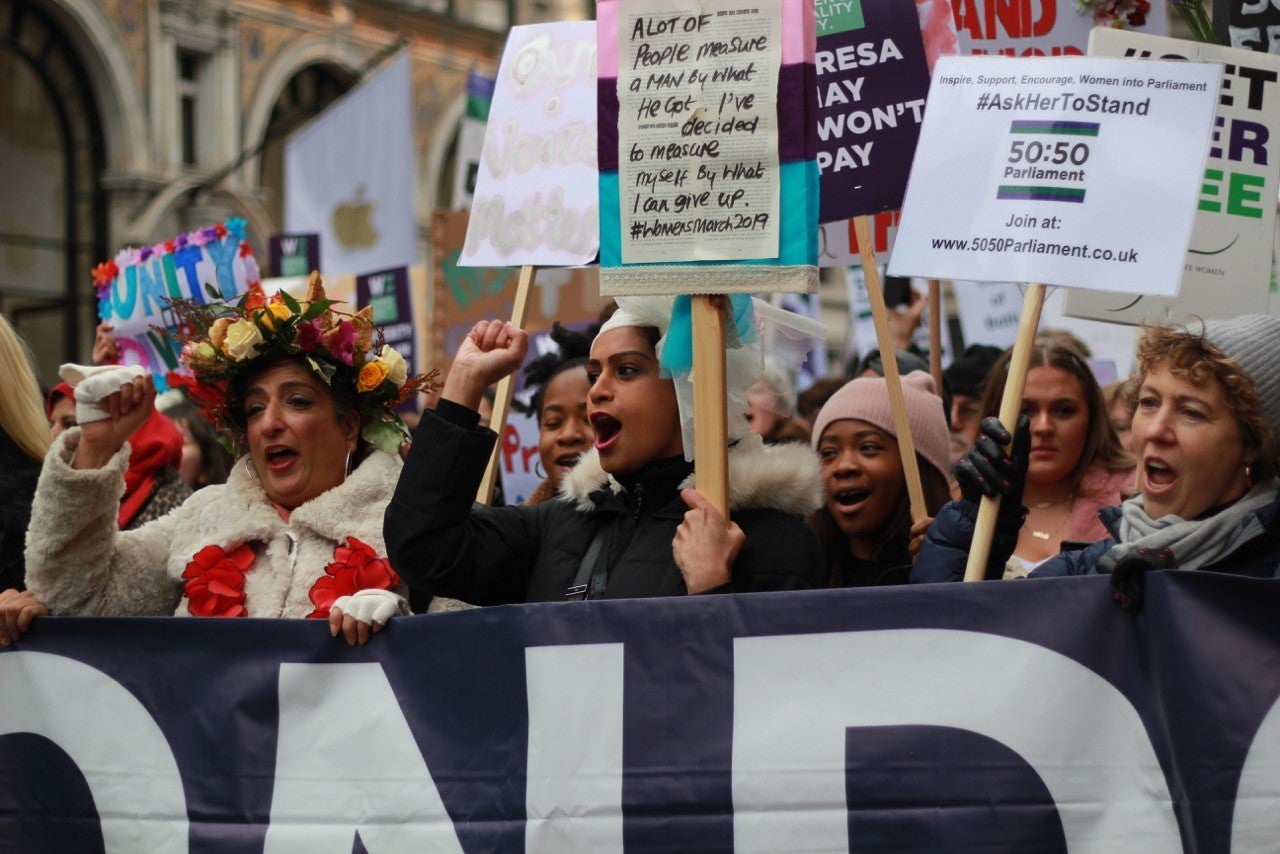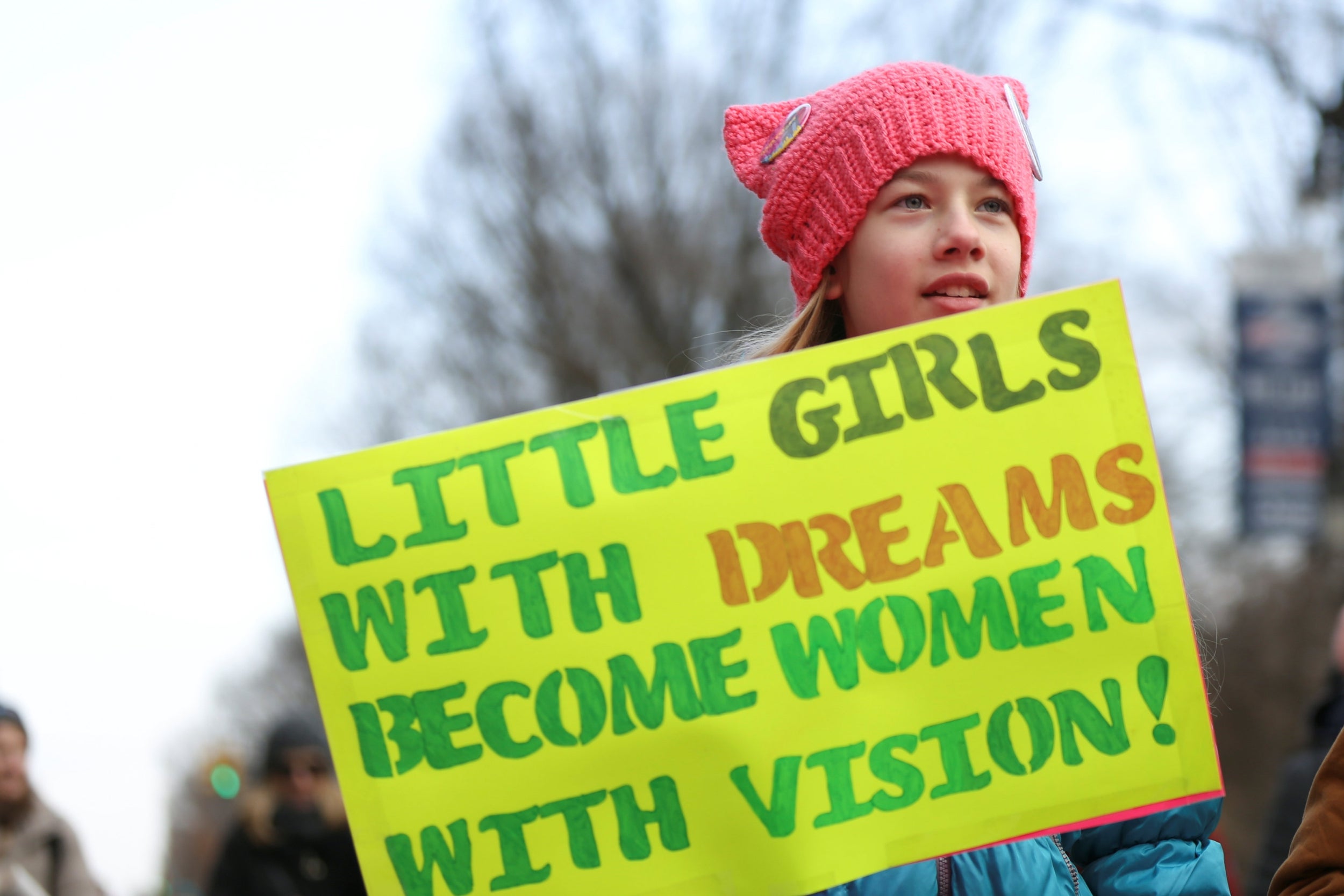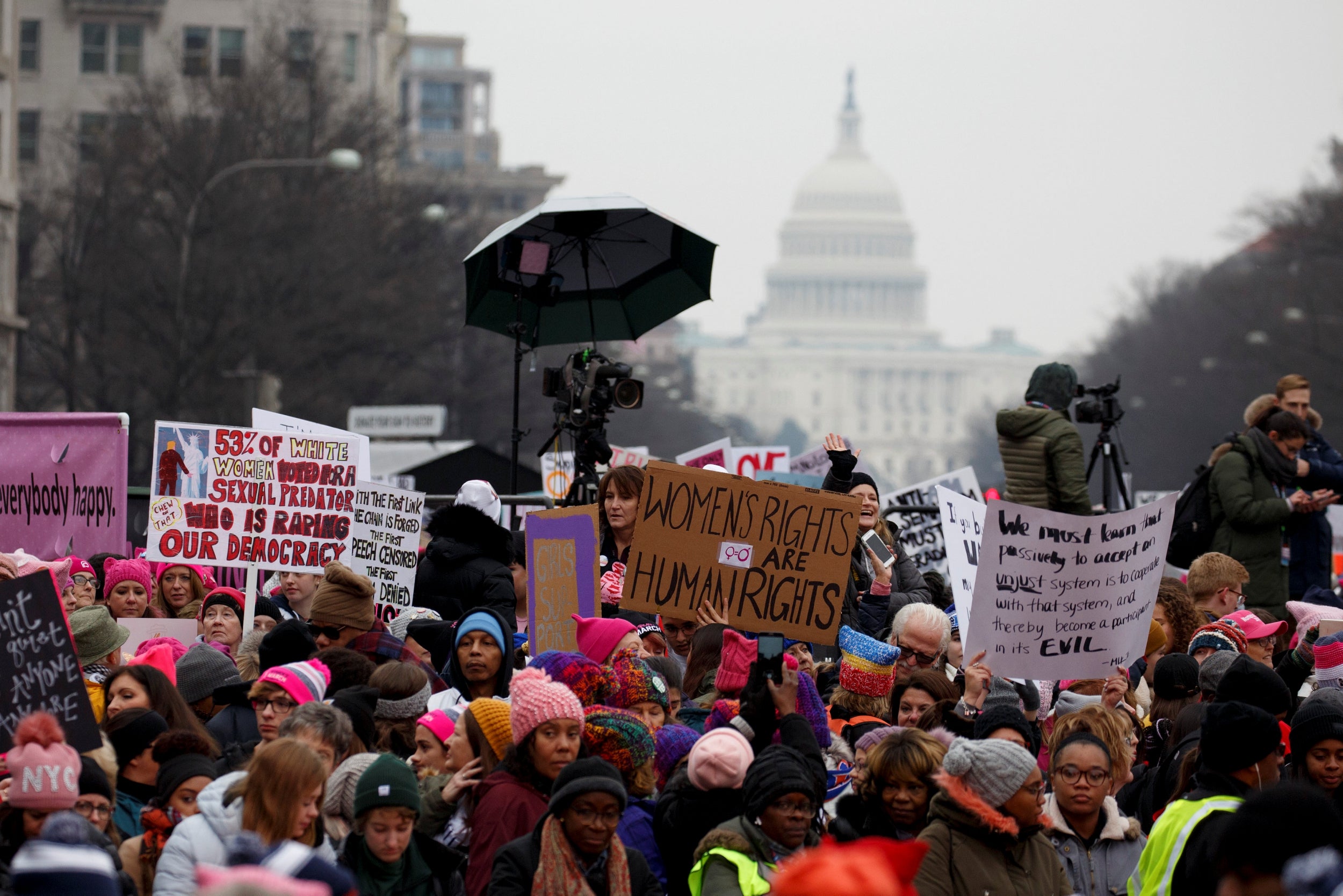Iranians marched in fiery protests to demand Ayatollah Khamenei's resignation after officials shot down a commercial plane

Iranians shout slogans as one of them holds-up a placard with a Persian script that reads, Death To The Liar, during a gathering to mark the victims of the Ukraine Boeing 737 passenger plane, in Tehrans business district on January 11, 2020. Morteza Nikoubazl/NurPhoto via Getty Images
Thousands of protestors flooded the streets of Tehran to demand the resignation of the country's leader, Ayatollah Ali Khamenei.
Demonstrators had first turned up for a vigil for the 176 passengers who were killed when Iran shot down a Ukrainian commercial airliner.
Fiery chants and marching triggered a response from the city's riot police, and videos on social media show tear gas launched at the crowds.
Thousands of protestors flooded the streets of Tehran days after Iran shot down a Ukrainian commercial airliner, killing all 176 passengers on board.
Emotional vigils for the passengers who were killed in the attack devolved into fiery demonstrations that saw Iranians marching with signs to demand the resignation of the country's leader, Ayatollah Ali Khamenei.
In video captured by The New York Times, angry protestors chanted "death to the dictator," and "shameless," with protestors on university campuses reportedly calling the Islamic Revolutionary Guards Corps "incompetent" and "the people's shame."
—Farnaz Fassihi (@farnazfassihi) January 11, 2020
Video posted to social media showed the protests triggered violent clashes with riot police, who responded with tear gas.
—Saina M (@Sainaraha) January 11, 2020
Tensions in the country reached a breaking point when Ukrainian Airlines Flight 752, which was carrying at least 130 Iranian citizens, was shot down on January 8 by Revolutionary Guard air defense forces after it took off from Tehran.
The country initially denied responsibility for the plane crash, suggesting it was a mechanical problem. However, in a statement released by military officials early January 11, Iran admitted to hitting the plane with a missile.
Despite the statement, foreign minister Javad Zarif immediately pointed some blame at the US, saying the crash was caused by "human error at a time of crisis caused by US adventurism."
US-Iran relations quickly devolved as the countries have traded barbs since Iran's attacks in retaliation to the US killing of Qassem Soleimani, a top military official, who was killed by a drone strike ordered by President Donald Trump.
Protesters in Tehran demand Iranian officials resign over PS752 missile strike
Semi-official Fars news agency says demonstrators ripped up pictures of Soleimani
The Associated Press · Posted: Jan 11, 2020

Demonstrators are seen in front of the Amirkabir University
in Tehran, Iran, on Saturday. (Atta Kenare/AFP via Getty Images)
Hundreds gathered at universities in Tehran on Saturday night to protest the Iran government's late acknowledgement that it "unintentionally'' shot down the Ukrainian jetliner that crashed earlier this week, after the government had for days repeatedly denied Western accusations and mounting evidence that it was responsible.
A military statement carried by state media earlier on Saturday said the plane was mistaken for a "hostile target" after it turned toward a "sensitive military centre" of Iran's Revolutionary Guard. The military was at its "highest level of readiness," it said, amid the heightened tensions with the United States.
Iran President Hassan Rouhani tweeted: "Iran deeply regrets this disastrous mistake."
The protesters demanded officials involved in the missile attack be removed from their positions and tried.
The semi-official Fars news agency reported demonstrators ripped up pictures of Iranian Gen. Qassem Soleimani, who was killed in a targeted attack by the U.S. earlier this month.
Police later broke up the demonstrations.
The Kyiv-bound flight PS752 plane was shot down early Wednesday — killing all 167 aboard, including 57 Canadians — hours after Iran launched a ballistic missile attack on two military bases housing U.S. troops in Iraq in retaliation for the killing of Soleimani in an American airstrike in Baghdad. No one was hurt in the attack on the U.S. bases.
Iranians had rallied around their leaders after the killing of Soleimani, who was seen as a national icon for building up armed groups across the region that project Iranian influence and battle the Islamic State group and other perceived enemies.
The shooting down of the plane and the lack of transparency around it could reignite anger at the country's leadership. Iran has already seen unrest over joblessness and the expense of basic household goods.
'We need full clarity'
Abroad, various governments condemned the strike on the passenger jet and demanded a full investigation.
Canadian Prime Minister Justin Trudeau said he told Rouhani that Iran's admission was an important step in providing answers for families, but that more must be done.
"A full and complete investigation must be conducted," Trudeau said. "We need full clarity on how such a horrific tragedy could have occurred."
Prime Minister Justin Trudeau held a news conference in Ottawa on Saturday, saying Iran must take "full responsibility" and that a full and complete investigation must be conducted.
In their conversation, he said Rouhani promised further investigation into the circumstances surrounding the plane crash.
Ukraine's President Volodymyr Zelensky said the crash investigation should continue and the "perpetrators" should be brought to justice. He said Iran should compensate victims' families — Prime Minister Oleksiy Honcharuk had separately said Ukraine would pay 200,000 hryvnia each to families (about $11,000 Cdn) — and he requested "official apologies through diplomatic channels."
Zelensky thanked the U.S, Britain, Canada and others for information about the crash and their support. He says that support "undoubtedly helped" push Iran to acknowledge its responsibility for the crash.
The crash killed 11 Ukrainians.
The Ukrainian airline criticized Iran's decision to leave its airspace open despite the hostilities.
"It's absolutely irresponsible," Ukraine International Airlines vice president Ihor Sosnovskiy told reporters. "There must be protection around ordinary people. If they are shooting somewhere from somewhere, they are obliged to close the airport."
Watch: Why flight 752 could take off amid missile strikes

Watch
Why Flight 752 could take off amid missile strikes
If Iran was firing missiles at U.S. military bases in Iraq that night, why was Ukraine International Airlines Flight 752 able to take off? CBC News’s Susan Ormiston looks for answers. 2:08
Protesters In Tehran Call For Justice Over Iran’s Downing Of Ukrainian Plane
By RFE/RL January 11, 2020
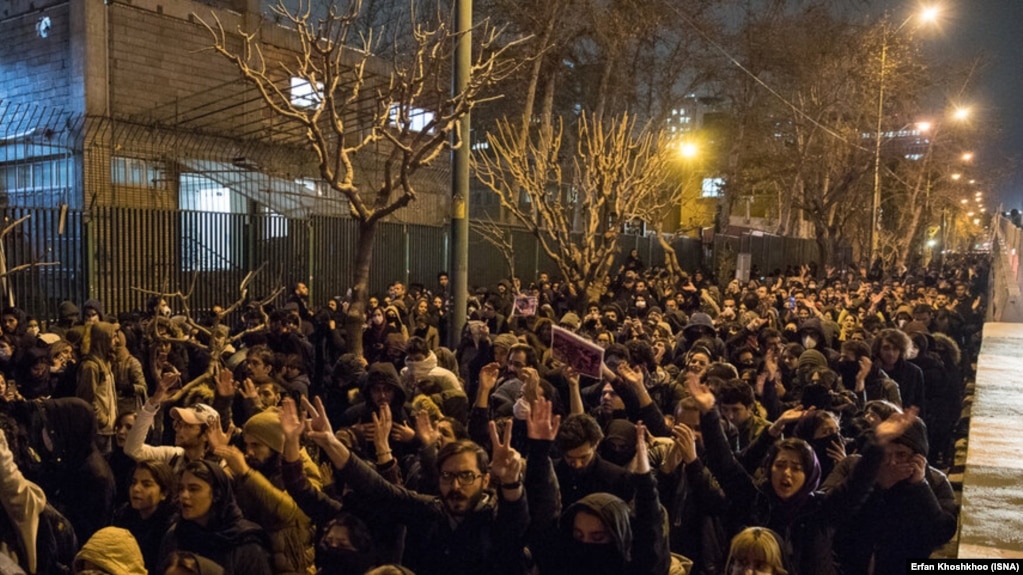
Protesters gathering in front of Amir Kabir university in Tehran.
Share
Protesters outside a university in Tehran have called for justice after Iran admitted it mistakenly shot down a Ukrainian passenger plane on January 8.
“Resignation is not enough," protesters chanted outside Amir Kabir university on January 11 while demanding a trial for those responsible for the downing of the plane that killed all 176 people on board.
Amateur videos posted on social media also showed protesters chanting “dishonorable” in an apparent reference to Iranian authorities, who finally admitted that a missile fired by its forces caused the crash.
The authorities announcement -- coming after repeated denials -- left many Iranians in shock and grief.
Amirali Hajizadeh, the head of the aerospace division of the Islamic Revolutionary Guards Corps (IRGC), said on January 11 that his unit accepts “full responsibility” for the tragedy.
In comments aired by state TV, he said that when he learned about the downing of the plane, “I wished I was dead.”
Iranian Supreme Leader Ayatollah Ali Khamenei expressed his “deep sympathy” to the families of the 176 victims and called on the armed forces to "pursue probable shortcomings and guilt in the painful incident.”
Nearly half of those killed were Iranian citizens while many others were ethnic Iranians living in other countries.With files from Reuters and CBC News
Iran police disperse student air crash protesters: news agency
BY AFP
Iranian police dispersed students chanting "radical" slogans during a Saturday gathering in Tehran to honour the 176 people killed when an airliner was mistakenly shot down, Fars news agency reported.
AFP correspondents said hundreds of students had gathered early in the evening at Amir Kabir University, in downtown Tehran, to pay respects to those killed in the air disaster.
The tribute later turned into an angry demonstration.
The students chanted slogans denouncing "liars" and demanded the resignation and prosecution of those responsible for downing the plane and allegedly covering up the accidental action.
Iran said on Saturday that the Ukraine International Airlines Boeing 737 was "unintentionally" shot down on Wednesday shortly after taking off from Tehran's main airport.
All 176 people on board died, mostly Iranians and Canadians, many of whom were students.
Fars, which is close to conservatives, said the protesting students chanted "destructive" and "radical" slogans.
The news agency said some of the students tore down posters of Qasem Soleimani, the Iranian general killed on January 3 in a US drone strike on Baghdad.
Fars published pictures of demonstrators gathered around a ring of candles during the tribute and a picture of a torn poster bearing the image of a smiling Soleimani.
It said that police "dispersed" them as they left the university and blocked streets, causing a traffic jam.
In an extremely unusual move, state television mentioned the protest, reporting that the students shouted "anti-regime" slogans.
A video purportedly of the protest circulated online Saturday evening showing police firing tear gas at protesters and a man getting up after apparently being hit in the leg by a projectile.
It was not possible to verify the location of the video, or when it was filmed.
Iran's acknowledgement on Saturday that the plane had been shot down in error came after officials had for days categorically denied Western claims that it had been struck by a missile.
The aerospace commander of Iran's Revolutionary Guards accepted full responsibility.
But Brigadier General Amirali Hajizadeh said the missile operator acted independently, shooting down the Boeing 737 after mistaking it for a "cruise missile".
Protests in Tehran after Iran admitted shooting down plane
Videos and comments on social media show angry Iranians calling on leadership to resign over plane crash incident.
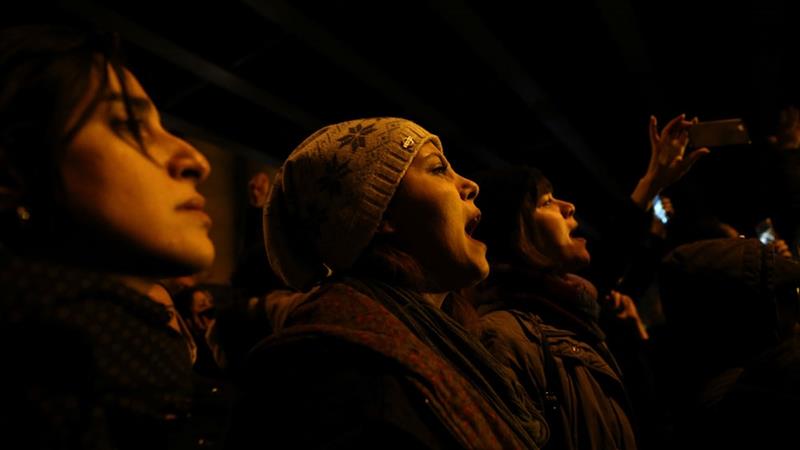
Protesters in Tehran demand Iranian officials resign over PS752 missile strike
Semi-official Fars news agency says demonstrators ripped up pictures of Soleimani
The Associated Press · Posted: Jan 11, 2020

Demonstrators are seen in front of the Amirkabir University
in Tehran, Iran, on Saturday. (Atta Kenare/AFP via Getty Images)
Hundreds gathered at universities in Tehran on Saturday night to protest the Iran government's late acknowledgement that it "unintentionally'' shot down the Ukrainian jetliner that crashed earlier this week, after the government had for days repeatedly denied Western accusations and mounting evidence that it was responsible.
A military statement carried by state media earlier on Saturday said the plane was mistaken for a "hostile target" after it turned toward a "sensitive military centre" of Iran's Revolutionary Guard. The military was at its "highest level of readiness," it said, amid the heightened tensions with the United States.
Iran President Hassan Rouhani tweeted: "Iran deeply regrets this disastrous mistake."
The protesters demanded officials involved in the missile attack be removed from their positions and tried.
The semi-official Fars news agency reported demonstrators ripped up pictures of Iranian Gen. Qassem Soleimani, who was killed in a targeted attack by the U.S. earlier this month.
Police later broke up the demonstrations.
ANALYSIS Admitting to downing Ukraine jetliner will cost Iran regime dearlyUkrainian plane was 'unintentionally' shot down, Iran says
The Kyiv-bound flight PS752 plane was shot down early Wednesday — killing all 167 aboard, including 57 Canadians — hours after Iran launched a ballistic missile attack on two military bases housing U.S. troops in Iraq in retaliation for the killing of Soleimani in an American airstrike in Baghdad. No one was hurt in the attack on the U.S. bases.
Iranians had rallied around their leaders after the killing of Soleimani, who was seen as a national icon for building up armed groups across the region that project Iranian influence and battle the Islamic State group and other perceived enemies.
The shooting down of the plane and the lack of transparency around it could reignite anger at the country's leadership. Iran has already seen unrest over joblessness and the expense of basic household goods.
'We need full clarity'
Abroad, various governments condemned the strike on the passenger jet and demanded a full investigation.
Canadian Prime Minister Justin Trudeau said he told Rouhani that Iran's admission was an important step in providing answers for families, but that more must be done.
"A full and complete investigation must be conducted," Trudeau said. "We need full clarity on how such a horrific tragedy could have occurred."
Prime Minister Justin Trudeau held a news conference in Ottawa on Saturday, saying Iran must take "full responsibility" and that a full and complete investigation must be conducted.
In their conversation, he said Rouhani promised further investigation into the circumstances surrounding the plane crash.
Ukraine's President Volodymyr Zelensky said the crash investigation should continue and the "perpetrators" should be brought to justice. He said Iran should compensate victims' families — Prime Minister Oleksiy Honcharuk had separately said Ukraine would pay 200,000 hryvnia each to families (about $11,000 Cdn) — and he requested "official apologies through diplomatic channels."
Zelensky thanked the U.S, Britain, Canada and others for information about the crash and their support. He says that support "undoubtedly helped" push Iran to acknowledge its responsibility for the crash.
Trudeau says Iran must take 'full responsibility' after admitting its missiles brought down PS752'It was clearly a war zone': Aviation experts question why Flight PS752 was cleared to fly
The crash killed 11 Ukrainians.
The Ukrainian airline criticized Iran's decision to leave its airspace open despite the hostilities.
"It's absolutely irresponsible," Ukraine International Airlines vice president Ihor Sosnovskiy told reporters. "There must be protection around ordinary people. If they are shooting somewhere from somewhere, they are obliged to close the airport."
Watch: Why flight 752 could take off amid missile strikes

Watch
Why Flight 752 could take off amid missile strikes
If Iran was firing missiles at U.S. military bases in Iraq that night, why was Ukraine International Airlines Flight 752 able to take off? CBC News’s Susan Ormiston looks for answers. 2:08
Protesters In Tehran Call For Justice Over Iran’s Downing Of Ukrainian Plane
By RFE/RL January 11, 2020

Protesters gathering in front of Amir Kabir university in Tehran.
Share
Protesters outside a university in Tehran have called for justice after Iran admitted it mistakenly shot down a Ukrainian passenger plane on January 8.
“Resignation is not enough," protesters chanted outside Amir Kabir university on January 11 while demanding a trial for those responsible for the downing of the plane that killed all 176 people on board.
Amateur videos posted on social media also showed protesters chanting “dishonorable” in an apparent reference to Iranian authorities, who finally admitted that a missile fired by its forces caused the crash.
The authorities announcement -- coming after repeated denials -- left many Iranians in shock and grief.
Amirali Hajizadeh, the head of the aerospace division of the Islamic Revolutionary Guards Corps (IRGC), said on January 11 that his unit accepts “full responsibility” for the tragedy.
In comments aired by state TV, he said that when he learned about the downing of the plane, “I wished I was dead.”
Iranian Supreme Leader Ayatollah Ali Khamenei expressed his “deep sympathy” to the families of the 176 victims and called on the armed forces to "pursue probable shortcomings and guilt in the painful incident.”
Nearly half of those killed were Iranian citizens while many others were ethnic Iranians living in other countries.With files from Reuters and CBC News
Iran police disperse student air crash protesters: news agency
BY AFP
Iranian police dispersed students chanting "radical" slogans during a Saturday gathering in Tehran to honour the 176 people killed when an airliner was mistakenly shot down, Fars news agency reported.
AFP correspondents said hundreds of students had gathered early in the evening at Amir Kabir University, in downtown Tehran, to pay respects to those killed in the air disaster.
The tribute later turned into an angry demonstration.
The students chanted slogans denouncing "liars" and demanded the resignation and prosecution of those responsible for downing the plane and allegedly covering up the accidental action.
Iran said on Saturday that the Ukraine International Airlines Boeing 737 was "unintentionally" shot down on Wednesday shortly after taking off from Tehran's main airport.
All 176 people on board died, mostly Iranians and Canadians, many of whom were students.
Fars, which is close to conservatives, said the protesting students chanted "destructive" and "radical" slogans.
The news agency said some of the students tore down posters of Qasem Soleimani, the Iranian general killed on January 3 in a US drone strike on Baghdad.
Fars published pictures of demonstrators gathered around a ring of candles during the tribute and a picture of a torn poster bearing the image of a smiling Soleimani.
It said that police "dispersed" them as they left the university and blocked streets, causing a traffic jam.
In an extremely unusual move, state television mentioned the protest, reporting that the students shouted "anti-regime" slogans.
A video purportedly of the protest circulated online Saturday evening showing police firing tear gas at protesters and a man getting up after apparently being hit in the leg by a projectile.
It was not possible to verify the location of the video, or when it was filmed.
Iran's acknowledgement on Saturday that the plane had been shot down in error came after officials had for days categorically denied Western claims that it had been struck by a missile.
The aerospace commander of Iran's Revolutionary Guards accepted full responsibility.
But Brigadier General Amirali Hajizadeh said the missile operator acted independently, shooting down the Boeing 737 after mistaking it for a "cruise missile".
Protests in Tehran after Iran admitted shooting down plane
Videos and comments on social media show angry Iranians calling on leadership to resign over plane crash incident.

Protesters raise slogans to show their sympathy to victims
of the plane crash in Tehran [Nazanin Tabatabaee/WANA/Reuters]
A group of Iranian protesters has demanded Iran's Supreme Leader Ayatollah Ali Khamenei step down after Tehran said its military mistakenly shot down a Ukrainian plane, killing all 176 people on board.
"Commander-in-chief [Khamenei] resign, resign," videos posted on Twitter showed hundreds of people chanting in front of Tehran's Amir Kabir University on Saturday.
Others on Twitter asked why the plane was allowed to take off when tensions in Iran were so high.
Fars news agency reported that Iranian police dispersed students that were chanting "radical" slogans during the gathering in Tehran.
The students chanted slogans denouncing "liars" and demanded the resignation and prosecution of those responsible for downing the plane and allegedly covering up the accidental action.
Fars said the protesting students chanted "destructive" and "radical" slogans.
Earlier on Saturday, Iran said its military had shot down the Ukrainian plane, calling it a "disastrous mistake".
The military claimed air defences were fired in error during an alert which was imposed after Iranian missile struck US targets in Iraq.
Iran denied for days after Wednesday's crash that it brought down the plane, although a top Revolutionary Guards commander on Saturday said he had told authorities about the unintentional missile strike the day it happened.
Speaking from Tehran, Al Jazeera Dorsa Jabbari said: "There is a lot of anger. Iranians are demanding justice and accountability. Many people including families of the victims are in shock. They do not understand why their government would have lied to them for this long."
"Vigils that were held near Amir Kabir University quickly turned into anti-government protests with people calling for the IRGC to leave the country," she said.
Iran's leadership last faced mass protests in November following the rise in petrol prices.
Condemnations
Foreign governments have condemned Iran's action, with Ukraine demanding compensation and a United States official calling the downing "reckless".
The United Kingdom said Tehran's admission was an important first step and urged a de-escalation in tensions.
Supreme leader Khamenei, until now silent about the crash, said information should be made public, while top officials and the military issued apologies.
What caused a Ukranian plane to crash in Tehran?
But the state television suggested revealing the truth might be used by the "enemies of Iran", usually a reference to the US and Israel.
The crash heightened international pressure on Iran after months of friction with the US and tit-for-tat attacks.
A US drone strike killed a top Iranian military commander in Iraq on January 3, prompting Tehran to fire at US targets on Wednesday.
Experts said mounting international scrutiny would have made it all but impossible to hide signs of a missile strike in any investigation.
They said Iran may have felt a U-turn was better than battling rising criticism abroad and growing grief and anger at home, as many victims were Iranians with dual nationality.
Rare apology
Iran's Islamic Revolutionary Guards Corps (IRGC), in a rare step, apologised to the nation and accepted full responsibility for the plane crash.
Senior Guards commander Amir Ali Hajizadeh said he had informed Iran's authorities on Wednesday about the unintentional strike, a comment that raised questions about why officials had publicly denied it for so long.
Speaking on state television, he said he wished he "could die" when he heard the news about the incident.
Ukraine demanded an official apology and compensation. Canadian Prime Minister Justin Trudeau called for "a complete and thorough investigation" with Iran's full cooperation.
Iranian Foreign Affairs Minister Mohammad Javad Zarif wrote on Twitter that "human error at time of crisis caused by US adventurism led to disaster", citing an initial armed forces investigation into the crash.
A military statement said the plane flew close to a sensitive Revolutionary Guards site at a time of high alert.
But Ukraine said the plane was in a normal flight corridor. Iran's Civil Aviation Organisation also said the airliner had not veered off its normal course.
Ukraine International Airlines said Iran should have closed the airport, adding that it received no indication it faced a threat and was cleared for take-off.
Analysts said an investigation would almost certainly have revealed signs on the smashed fuselage of a missile strike.
"There's nothing you can do to cover it up or hide it," said Anthony Brickhouse, an air safety expert at Embry-Riddle Aeronautical University and former US National Transportation Safety Board investigator. "Evidence is evidence."
The disaster echoed a 1988 incident, when a US warship shot down an Iranian airliner, killing 290 people. While Washington claimed it was an accident, Tehran said it was intentional.
Iran's 'Unforgivable Mistake' Downing Jet Elicits Furor At Home And Abroad
January 11, 2020
COLIN DWYER

Mourners gathered for a candlelight vigil Saturday in Iran's
MORE ON IRANTruth about Iran plane crash could not be hidden: ZelenskyytodayIran says it 'unintentionally' shot down plane: Latest updatestodayIran's retaliation is not overtodayProtests in Tehran after Iran admitted shooting down planetoday
A group of Iranian protesters has demanded Iran's Supreme Leader Ayatollah Ali Khamenei step down after Tehran said its military mistakenly shot down a Ukrainian plane, killing all 176 people on board.
"Commander-in-chief [Khamenei] resign, resign," videos posted on Twitter showed hundreds of people chanting in front of Tehran's Amir Kabir University on Saturday.
Others on Twitter asked why the plane was allowed to take off when tensions in Iran were so high.
More:
US believes Iran accidentally shot down Ukraine plane: Reports
'No survivors': Ukrainian jet crashes in Iran with 176 on board
'Disastrous mistake': Iran admits it shot down Iranian plane
Fars news agency reported that Iranian police dispersed students that were chanting "radical" slogans during the gathering in Tehran.
The students chanted slogans denouncing "liars" and demanded the resignation and prosecution of those responsible for downing the plane and allegedly covering up the accidental action.
Fars said the protesting students chanted "destructive" and "radical" slogans.
Earlier on Saturday, Iran said its military had shot down the Ukrainian plane, calling it a "disastrous mistake".
The military claimed air defences were fired in error during an alert which was imposed after Iranian missile struck US targets in Iraq.
Iran denied for days after Wednesday's crash that it brought down the plane, although a top Revolutionary Guards commander on Saturday said he had told authorities about the unintentional missile strike the day it happened.
BREAKING:Public mourning gatherings turn into protests in #Iran. Angry crowds chanting, "Death to the liars."#IranPlaneCrash #UkrainePlaneCrash pic.twitter.com/20jPNia6WJ— Farnaz Fassihi (@farnazfassihi) January 11, 2020
Speaking from Tehran, Al Jazeera Dorsa Jabbari said: "There is a lot of anger. Iranians are demanding justice and accountability. Many people including families of the victims are in shock. They do not understand why their government would have lied to them for this long."
"Vigils that were held near Amir Kabir University quickly turned into anti-government protests with people calling for the IRGC to leave the country," she said.
Iran's leadership last faced mass protests in November following the rise in petrol prices.
Condemnations
Foreign governments have condemned Iran's action, with Ukraine demanding compensation and a United States official calling the downing "reckless".
The United Kingdom said Tehran's admission was an important first step and urged a de-escalation in tensions.
Supreme leader Khamenei, until now silent about the crash, said information should be made public, while top officials and the military issued apologies.
What caused a Ukranian plane to crash in Tehran?
But the state television suggested revealing the truth might be used by the "enemies of Iran", usually a reference to the US and Israel.
The crash heightened international pressure on Iran after months of friction with the US and tit-for-tat attacks.
A US drone strike killed a top Iranian military commander in Iraq on January 3, prompting Tehran to fire at US targets on Wednesday.
Experts said mounting international scrutiny would have made it all but impossible to hide signs of a missile strike in any investigation.
They said Iran may have felt a U-turn was better than battling rising criticism abroad and growing grief and anger at home, as many victims were Iranians with dual nationality.
Rare apology
Iran's Islamic Revolutionary Guards Corps (IRGC), in a rare step, apologised to the nation and accepted full responsibility for the plane crash.
Senior Guards commander Amir Ali Hajizadeh said he had informed Iran's authorities on Wednesday about the unintentional strike, a comment that raised questions about why officials had publicly denied it for so long.
Speaking on state television, he said he wished he "could die" when he heard the news about the incident.
Ukraine demanded an official apology and compensation. Canadian Prime Minister Justin Trudeau called for "a complete and thorough investigation" with Iran's full cooperation.
Iranian Foreign Affairs Minister Mohammad Javad Zarif wrote on Twitter that "human error at time of crisis caused by US adventurism led to disaster", citing an initial armed forces investigation into the crash.
A military statement said the plane flew close to a sensitive Revolutionary Guards site at a time of high alert.
But Ukraine said the plane was in a normal flight corridor. Iran's Civil Aviation Organisation also said the airliner had not veered off its normal course.
Ukraine International Airlines said Iran should have closed the airport, adding that it received no indication it faced a threat and was cleared for take-off.
Analysts said an investigation would almost certainly have revealed signs on the smashed fuselage of a missile strike.
"There's nothing you can do to cover it up or hide it," said Anthony Brickhouse, an air safety expert at Embry-Riddle Aeronautical University and former US National Transportation Safety Board investigator. "Evidence is evidence."
The disaster echoed a 1988 incident, when a US warship shot down an Iranian airliner, killing 290 people. While Washington claimed it was an accident, Tehran said it was intentional.
Iran's 'Unforgivable Mistake' Downing Jet Elicits Furor At Home And Abroad
January 11, 2020
COLIN DWYER

Mourners gathered for a candlelight vigil Saturday in Iran's
capital, Tehran, to remember the victims of the Ukrainian
plane crash.Ebrahim Noroozi/AP
Less than a day after Iran finally acknowledged that its armed forces unintentionally brought down a Ukrainian jetliner, Iranian authorities' admission of the "unforgivable mistake" has had major reverberations — both in Iran's capital, Tehran, where demonstrators crowded local universities Saturday, and around a stunned world.
"The fact that Iran has now taken responsibility for the downing of that aircraft means that it is likely that they will be full participants and fully allow a credible, independent international investigation with all partners involved," Canadian Prime Minister Justin Trudeau told a news conference Saturday.
"We still have work to do to ensure that happens," he added, "but the question of responsibility, I think, takes us a step forward towards truly having a very credible and thorough investigation."
The prime minister's comments came two days after he first revealed Canada's suspicion that an Iranian missile system shot down the plane near Tehran early Wednesday. Of the 176 people who were killed aboard the aircraft, 57 were Canadian nationals.
"I had a chance to sit with some of the families of the victims," Trudeau said Saturday. "They are hurt, angry and grieving. They want answers. They want justice. What Iran has admitted to is very serious. Shooting down a civilian aircraft is horrific. Iran must take full responsibility. Canada will not rest until we get the accountability, justice and closure that the families deserve."

Canadian Prime Minister Justin Trudeau addresses a news conference Saturday in Ottawa, flanked by high-level ministers. Trudeau called the Iranian admission a "step forward," but noted there are lots of questions still to be answered.Dave Chan/AFP via Getty Images
Canadians were far from the only passengers who on board. Most of the passengers on board Ukraine International Airlines Flight 752 were Iranian. Demonstrators there turned out in droves Saturday to mourn the victims and protest the actions of their own government, which spent days forcefully denying the missile strike before reversing course with its admission.

NATIONAL SECURITY
Ukrainian Plane Crash In Iran: Here's What The Available Evidence Shows

WORLD
Iran Says It Shot Down Ukrainian Jetliner By Mistake
The Iranian government, already beleaguered with recent protests over a spike in fuel prices, enjoyed an upswell of popular support after a U.S. drone strike killed a prominent Iranian military commander in Baghdad last week. The killing of Maj. Gen. Qassem Soleimani, who enjoyed a towering reputation among Iranians, elicited massive rallies of mourners and expressions of support for Supreme Leader Ayatollah Ali Khamenei.
Earlier this week, Khamenei and the Iranian military retaliated for Soleimani's killing with a series of missile strikes on Iraqi bases hosting U.S. troops. The attacks, which resulted in no casualties at the bases, came within hours of the Ukrainian jetliner's crash.
Now, the downing of that plane threatens to unravel the broad domestic support Iran's government enjoyed just one week ago. Circulating on social media Saturday were videos of angry protesters, many of whom took aim at Khamenei with chants of "shameless" and "death to the dictator," according to Reuters.
Tehran: University students chanting “Soleimani is a murderer. His leader, Ali Khamenei is also a murderer.” Protest by thousands of Iranians in Tehran burst the propaganda balloon of the regime regarding Qassem Soleimani’s elimination. #Iran #IranPlaneCrash Via #MEK network. pic.twitter.com/n0hmasMSgj— Shahin Gobadi (@gobadi) January 11, 2020
Other images depicted security forces attempting to disperse the throng by firing canisters of tear gas and manhandling demonstrators.
And here comes the tear gas-> #Tehran, #Iran, #UkranianPlaneCrash #IranPlaneCrash pic.twitter.com/8ka3USC04l— Bahman Kalbasi (@BahmanKalbasi) January 11, 2020
"Why should I vote for this regime? I don't trust them at all," one protester told Reuters. "They lied to us about the plane crash. Why should I trust them when they don't trust people enough to tell the truth?"
Iran newspaper, the official daily publication of the government of Iran, also released a cover story listing the names of the victims and featuring, in bold white lettering, the word "Unforgivable."
صفحه نخست روزنامه ایران
یکشنبه ۲۲ دی ماه ۱۳۹۸
نابخشودنی..
*تیتر یک «روزنامه ایران» پس از اعلام علت سقوط سه روز پیش هواپیمای اوکراینی
*همراه با گرامیداشت یاد و نام قربانیان پرواز هواپیمایی اوکراین باانتشار اسامی تمام جانباختگان ایرانی و خارجی در صفحه اول pic.twitter.com/BEz8aTE9nd— روزنامه ایران (@IranNewspaper) January 11, 2020
Meanwhile, Ukrainian President Volodymyr Zelenskiy, who has been taking a close interest in the investigation into the causes of the crash, said he spoke over the phone Saturday with his Iranian counterpart, Hassan Rouhani.
Zelenskiy said Rouhani, who initiated the call, personally apologized for the tragedy, while the Ukrainian leader insisted on the speedy identification and return of the bodies of the 11 Ukrainians on board.
"Recognizing the 'missile version' as the cause of the disaster paved the way for its further investigation without any delay and obstruction," Zelenskiy said in a statement released Saturday. "I look forward to further constructive cooperation with Iran in accordance with international law."
Iran admits it 'unintentionally' shot down Ukrainian plane (13:30)
An Iranian commander said 'I wish I could die' after Tehran accepted responsibility for shooting down Ukrainian Airlines flight 752
Ukraine's president wants a 'full admission of guilt' and compensation from Iran after it shot down a commercial plane
Trump doesn't want to go to war, he just wants to look tough, even if it puts US troops in danger

Justin Trudeau toughens his stand on the world stage as he demands justice over plane downed by Iran
Canadian Prime Minister Justin Trudeau emerged this week from a long holiday break to face a tragedy that may recast his nation's role on the global stage ...
Less than a day after Iran finally acknowledged that its armed forces unintentionally brought down a Ukrainian jetliner, Iranian authorities' admission of the "unforgivable mistake" has had major reverberations — both in Iran's capital, Tehran, where demonstrators crowded local universities Saturday, and around a stunned world.
"The fact that Iran has now taken responsibility for the downing of that aircraft means that it is likely that they will be full participants and fully allow a credible, independent international investigation with all partners involved," Canadian Prime Minister Justin Trudeau told a news conference Saturday.
"We still have work to do to ensure that happens," he added, "but the question of responsibility, I think, takes us a step forward towards truly having a very credible and thorough investigation."
The prime minister's comments came two days after he first revealed Canada's suspicion that an Iranian missile system shot down the plane near Tehran early Wednesday. Of the 176 people who were killed aboard the aircraft, 57 were Canadian nationals.
"I had a chance to sit with some of the families of the victims," Trudeau said Saturday. "They are hurt, angry and grieving. They want answers. They want justice. What Iran has admitted to is very serious. Shooting down a civilian aircraft is horrific. Iran must take full responsibility. Canada will not rest until we get the accountability, justice and closure that the families deserve."

Canadian Prime Minister Justin Trudeau addresses a news conference Saturday in Ottawa, flanked by high-level ministers. Trudeau called the Iranian admission a "step forward," but noted there are lots of questions still to be answered.Dave Chan/AFP via Getty Images
Canadians were far from the only passengers who on board. Most of the passengers on board Ukraine International Airlines Flight 752 were Iranian. Demonstrators there turned out in droves Saturday to mourn the victims and protest the actions of their own government, which spent days forcefully denying the missile strike before reversing course with its admission.

NATIONAL SECURITY
Ukrainian Plane Crash In Iran: Here's What The Available Evidence Shows

WORLD
Iran Says It Shot Down Ukrainian Jetliner By Mistake
The Iranian government, already beleaguered with recent protests over a spike in fuel prices, enjoyed an upswell of popular support after a U.S. drone strike killed a prominent Iranian military commander in Baghdad last week. The killing of Maj. Gen. Qassem Soleimani, who enjoyed a towering reputation among Iranians, elicited massive rallies of mourners and expressions of support for Supreme Leader Ayatollah Ali Khamenei.
Earlier this week, Khamenei and the Iranian military retaliated for Soleimani's killing with a series of missile strikes on Iraqi bases hosting U.S. troops. The attacks, which resulted in no casualties at the bases, came within hours of the Ukrainian jetliner's crash.
Now, the downing of that plane threatens to unravel the broad domestic support Iran's government enjoyed just one week ago. Circulating on social media Saturday were videos of angry protesters, many of whom took aim at Khamenei with chants of "shameless" and "death to the dictator," according to Reuters.
Tehran: University students chanting “Soleimani is a murderer. His leader, Ali Khamenei is also a murderer.” Protest by thousands of Iranians in Tehran burst the propaganda balloon of the regime regarding Qassem Soleimani’s elimination. #Iran #IranPlaneCrash Via #MEK network. pic.twitter.com/n0hmasMSgj— Shahin Gobadi (@gobadi) January 11, 2020
Other images depicted security forces attempting to disperse the throng by firing canisters of tear gas and manhandling demonstrators.
And here comes the tear gas-> #Tehran, #Iran, #UkranianPlaneCrash #IranPlaneCrash pic.twitter.com/8ka3USC04l— Bahman Kalbasi (@BahmanKalbasi) January 11, 2020
"Why should I vote for this regime? I don't trust them at all," one protester told Reuters. "They lied to us about the plane crash. Why should I trust them when they don't trust people enough to tell the truth?"
Iran newspaper, the official daily publication of the government of Iran, also released a cover story listing the names of the victims and featuring, in bold white lettering, the word "Unforgivable."
صفحه نخست روزنامه ایران
یکشنبه ۲۲ دی ماه ۱۳۹۸
نابخشودنی..
*تیتر یک «روزنامه ایران» پس از اعلام علت سقوط سه روز پیش هواپیمای اوکراینی
*همراه با گرامیداشت یاد و نام قربانیان پرواز هواپیمایی اوکراین باانتشار اسامی تمام جانباختگان ایرانی و خارجی در صفحه اول pic.twitter.com/BEz8aTE9nd— روزنامه ایران (@IranNewspaper) January 11, 2020
Meanwhile, Ukrainian President Volodymyr Zelenskiy, who has been taking a close interest in the investigation into the causes of the crash, said he spoke over the phone Saturday with his Iranian counterpart, Hassan Rouhani.
Zelenskiy said Rouhani, who initiated the call, personally apologized for the tragedy, while the Ukrainian leader insisted on the speedy identification and return of the bodies of the 11 Ukrainians on board.
"Recognizing the 'missile version' as the cause of the disaster paved the way for its further investigation without any delay and obstruction," Zelenskiy said in a statement released Saturday. "I look forward to further constructive cooperation with Iran in accordance with international law."
Iran admits it 'unintentionally' shot down Ukrainian plane (13:30)
An Iranian commander said 'I wish I could die' after Tehran accepted responsibility for shooting down Ukrainian Airlines flight 752
Ukraine's president wants a 'full admission of guilt' and compensation from Iran after it shot down a commercial plane
Trump doesn't want to go to war, he just wants to look tough, even if it puts US troops in danger
Justin Trudeau toughens his stand on the world stage as he demands justice over plane downed by Iran
Canadian Prime Minister Justin Trudeau emerged this week from a long holiday break to face a tragedy that may recast his nation's role on the global stage ...

